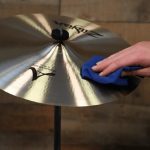The world of percussion music is quite versatile. Among the many instruments that are worth every investment is the Tongue drum, or simply known as the tongue.
If you have never come across this instrument or interested, but you don’t know what it’s all about, you have come to the right place. We will be sharing about a guide to a tongue drum.
Let’s get right in.
What Is A Tongue Drum (AKA Tongue)?
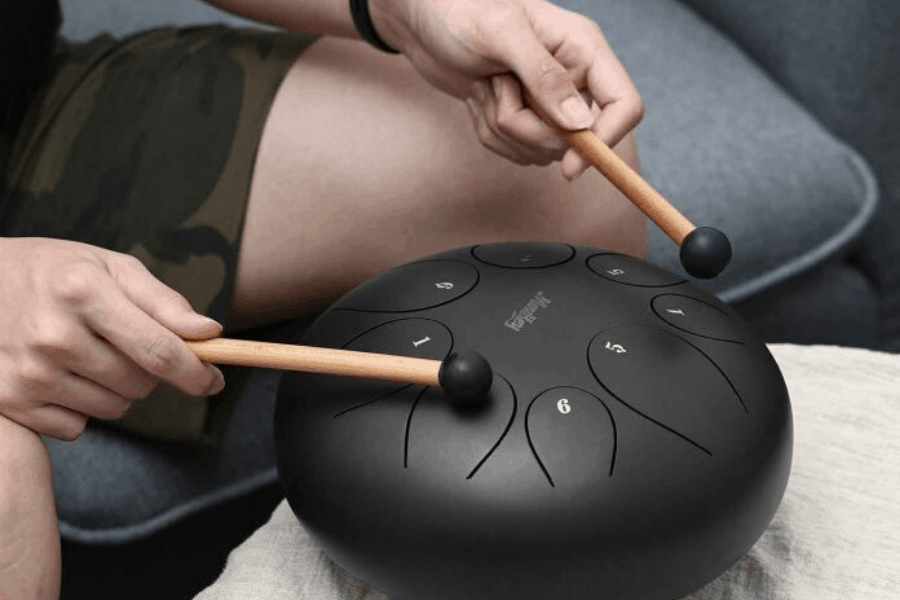
A tongue drum is one of the newest percussion ideas in the world. It’s also known as a steel drum, tank drum, or hank drum and belongs to the idiophone family.
That means you need to understand what idiophone percussion instruments are. Tank drums generally follow the same idea.
An idiophone is simply a musical instrument that makes sound through the vibration of its own components. In other words, the instrument is itself the sound.
Tongue drums function on the same principle, inspired by other instrument hang drums, slit drums, whale drums, and tambiro.
These pieces have become well known because they are popular as meditation music. Also, they are used for yoga, practice, and sound therapy. Hence, they are more than just musical instruments but medical components too.
In terms of appearance, the drums look a little UFO. But they are not from another planet. The music they can create, however, is something else.
There is no better instrument than the tongue for those who want to get creative, jam, enjoy beautiful tunes, and relax their minds.
They produce such a soothing sound that sometimes doctors recommend its use in therapies.
And the best part is that anyone can enjoy it, no matter their age. You can always discover the use of these pieces in your music.
How to Make A Tongue Drum?
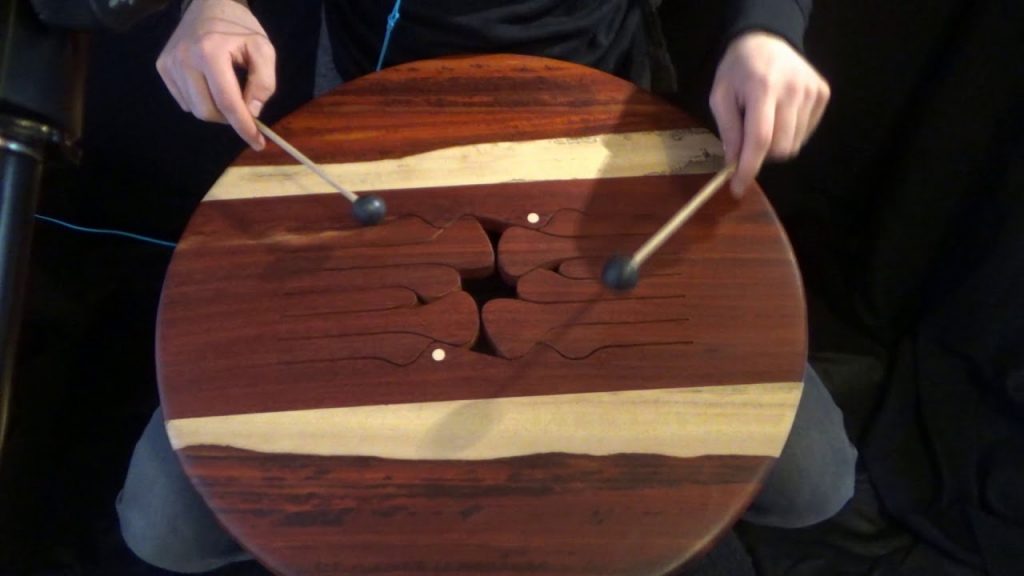
Modern tongue drums are handcrafted from different types of wood. The most popular ones, produced commercially, are made from steel or metal alloy.
The hank drums are more like Caribbean steek drums, hung drum, and other similar instruments. Tambiros and whale drums inspired these drums.
The first person to build a tongue drum was Dennis Havlena, who did it by cutting the bottom of a propane tongue and then creating a circular cross pattern on the lower side to make the “tongues.”
You can create seven to ten tongues, depending on the tones you want to craft.
There are different types of tongue drums. Therefore, the first step would be to choose your desired material. It also depends on how you want to use the drums.
As stated above, tongue drums are used in therapeutic music.
You can make a tank drum from wood, steel, or a propane tongue. The process can take weeks to complete because it’s not something you just wake up and start.
A steel tongue drum, for instance, starts with sinking the steel shells and then nitriding before tuning.
Let’s look at how to make specific types of tongue drums.
How To Make A Steel Tongue Drum?

A steel tongue drum is a round steel slit drum, made initially from a propane tongue. Those who have owned one can relate to its design.
To make one, you need access to a metal shop. Once you have gotten the ideal piece, start by cutting two circles of steel sheet metal.
Follow these steps to complete:
Step 1- Cutting the steel
1. Find a good steel sheet metal, about 48 x 96-inch 21 gauge.
2. Cut it into half. You will need a sheet metal shear for this.
3. Draw two circles on the metal using a compass, where you will be making the cutout.
4. Take the sheet-metal to the bandsaw. If you are using a small bandsaw, be sure to have it well supported in place under the sheet. You need to make sure the cut is stable.
5. Start to make the cuts slowly.
6. File and sand it to remove sharp edges.
Step 2: Forging
You will need protective gear for this process.
1. Pre-heat the circle inside your forge.
2. Put the metal sheet circle inside.
3. Get the metal to a glass transition point.
4. Remove the metal using a long plier and start hammering into shape. Put it back into the forge every 5 minutes.
Step 3: Match the top and bottom
Step 4: Brazing
Step 5: Tuning
Step 6: Polishing and finishing
You have your steel tongue drum ready.
How to Make A Wooden Tongue Drum?
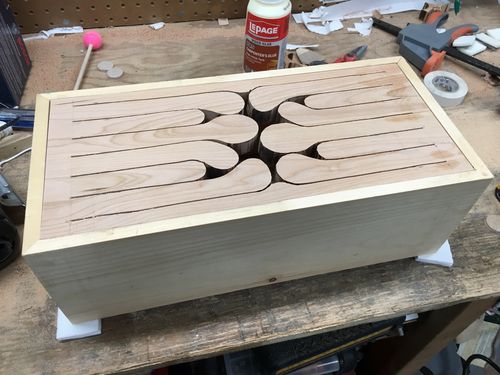
You can make a good tongue drum from wood. This is perhaps the most convenient way to save some cash since wood is generally easily available.
- Assemble the six wooden beards for creating a rectangular box. You can buy them ready-made online. The most recommended wood types include cedar, forest oak, and mahogany, common in most wooden instruments. They offer wide tuning ranges.
- Choose any of the four wooden boards assembled in step one. Use a black marker and a ruler to draw a circle of ca. 70mm. Ensure what to draw looks like a cycle.
- Take another wood that will be on the top side. Draw a tongue drum pattern on the piece using a marker and then use a wood chisel to curve it into shape. Be very careful in this step.
- Smooth the wood using sandpaper. Do not be too rough.
- Choose one of the two shorter wooden boards and make two little holes in the middle using a drill. Be sure to mark where you want to drill.
- Use some wood glue and start gluing the piece together. Be careful and remove all excess glue.
- Sand the edges for a smooth finish. You can them make the tongues on the wood and finish smoothing.
Tongue Drum: What Kind of Wood to Use?
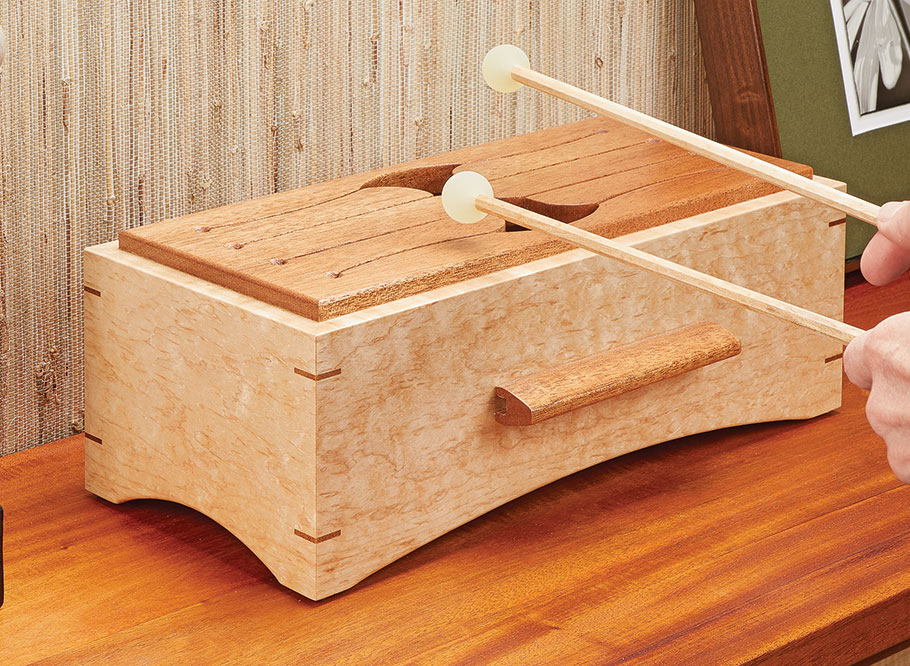
Wood tongue drums are quite impressive music instruments. You will realize that they are more expensive because it takes a lot more time and great care to come up with a perfect final product.
Choosing the right wood is critical to this process. There are all sorts of woods, but not all will produce the sound you need.
Generally, three kinds of wood are popular for wooden instruments:
• Cedar
• Forest oak
• Mahogany
Ideally, one needs hand-picked domestic hardwoods to build a string instrument with the perfect tunes. Note that the hardwood use has to go through different stages of preparation.
Different manufactures will use different woods in their products to give custom features. For instance, you can buy a tongue with Red Elm on the top and spruce on the side. Such offers a great sound at an affordable price.
Standard choices are made from woods like canary wood, shedua, mahogany, lyptus, padauk, chocolate cedar, and purpleheart. Other customized instruments can come with specific wood selection.
In short, you need the highest quality wood to craft the best sounds from tank drums. It’s important to note that different regions have different woods, contributing to the variations.
How To Make Your Own Tongue Drum Out Of A Propane Tank?
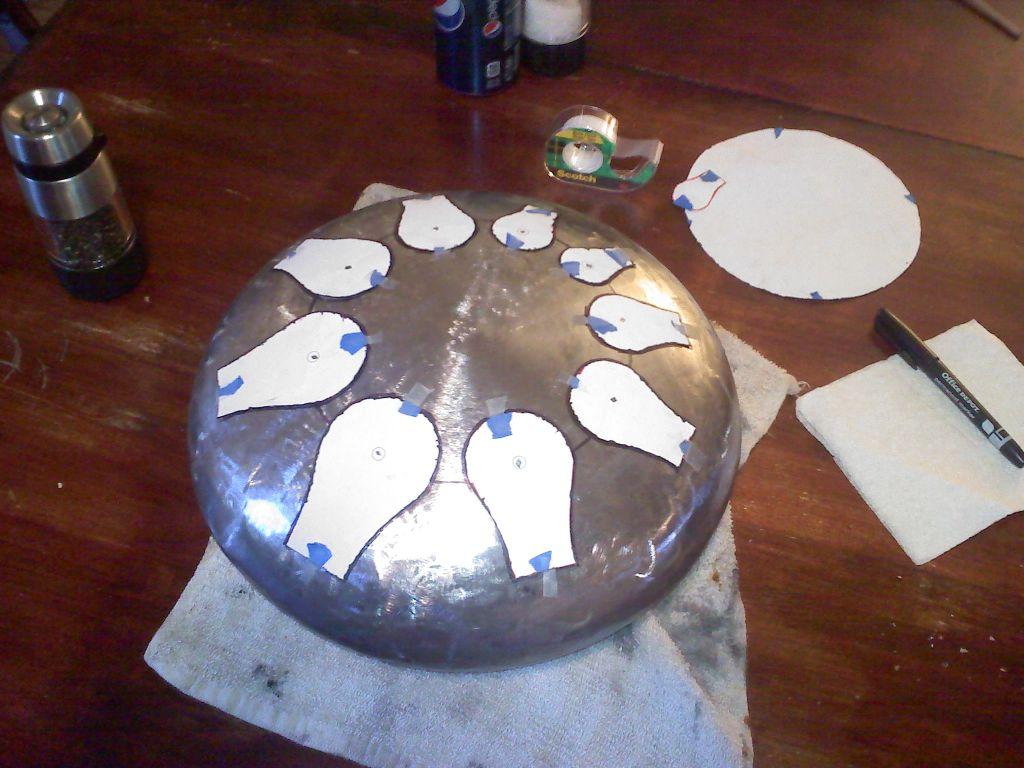
A discarded propane tank could be the easiest method to build your own steel tongue drum. Dennis Havlena made it from this material. Generally, all you need is this piece of metal. Consider the following steps.
- Prepare the tongue drum by washing it clean with soapy water.
- Use a custom grind to spin and grind the tank into shape. Or, you can use a drill mounted wheel wire, which makes the whole process much easier.
- Mark the tongues. Use a mark to where you will be cutting the tongues.
- Cut the tongues. Ensure you have made a plunge cut on each side of each tongue before cutting them.
- Pre-tune the tongue drums. A lot of factors determine the sound produced from tongue drums. Consider the size of each tongue, for instance, and tune them one by one.
- Cut out the middle. Now that each side has been marked with tongues cut the tank in the middle.
- Clean the inside. Take the piece back to the grind and clean the inside completely.
- Find the tunes. Tune your drum closest to the final tune.
- Heating. Grinding, cutting, and working on the metal heats it up, affecting metal vibration. Heat it all around for uniform hardness using an oven.
- Attach the two sides.
- Clear the overlapping edges using a grinder
- Turn your damper down.
- Final tuning
- Finish using your preferred smoothening approach.
- Create your notes
And there you have it, a perfect propane tongue drum.
How to Take Care of a Steel Tongue Drum?

Once you have made your tongue drum and tested its goodness, the last thing you want is to have it damaged. Whereas they are not very weak, it very easy for the tongue drum to develop some issues if you don’t take good care of it.
As you may have noticed, these are not cheap instruments, and hence, they require a lot of care. The music they produce is soft and soothing, making someone assume that they are weak.
But that is not the case.
The good news is, caring for the tongue drum us not that hard. You do it the same way you care for anything else you have invested in.
It begins by understanding the precautions and minding about what your tongue can and cannot do.
When in use
When playing, keep in mind the following tips.
• Apply the right force. Tongue drums can be played with either hands, mallets, or even drum sticks. That means the amount of force you apply determines how long the drums will last. As much as you may want loud tones, understand that there is a limit to what the drum can do.
• Your wrist should provide the motion. It’s good to take a few lessons on playing tongue drums before you start using them. Many people break these instruments because they don’t know how well to play them. Do not use the whole arm or elbow when playing. The idea here is to offer the right pressure. You can create all the sound you need without struggling. Besides, you don’t want to hurt your hand through the process.
• Do not play the middle using your fingers. The steel tongue drum has different parts that produce varying sounds, and there are specific ways to hit these areas. For the middle part, it advised that you don’t play it with your fingers. Instead, keep your aim on the sides and bottom half of the drum. Your hand should feel good at all times.
• Remove rings or bracelets. It is not a good idea to play the tongue with rings on your fingers. This will not only scratch the surface, but it may also break the instrument, affecting how it sounds. Besides, it may cause physical damage to your hand.
The way you play a steel tongue drum will determine how long it will serve you.
Storage
If you are not using the steel tongue drums, ensure it’s well stored in a safe and dry area indoors. Do not leave them outside exposed to the elements.
Transporting
A padded protective carrying case would be the best way to transport your steel tongue drums. This will protect it from scratches or accidental falls.
Cleaning
You want your steel tongue drums clean at all times. It’s advisable to use a thick piece of paper to clean between the tongue and the whole drum. This will clear the slits, giving you a more focused sound.
Troubleshooting
If there is an issue with your steel tongue drum that you cannot resolve, do not attempt repairing it. For instance, a buzzing sound may mean debris is lodged between the grooves. If cleaning does not resolve the issue, the drum might have chipped, cracked, or become dented. Send it back to the manufacturer for repairs.
Where to Buy A Tongue Drum?
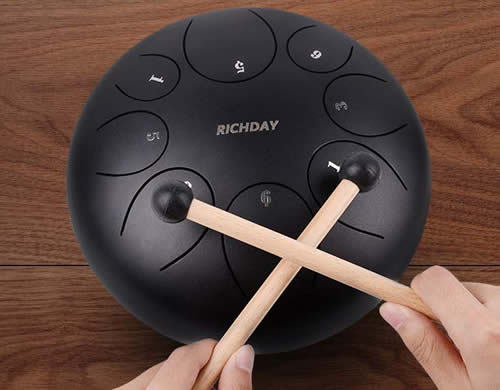
The best way to own a good steel tongue drum could be to create your own. But this is a long process that requires a lot of knowledge and time.
As such, buying from a reliable manufacturer is the most convenient option. Today, there are many different places where these instruments can be purchased.
If you wish to find one urgently, your local music store may have it. You can visit the shop, or call in to order.
You will not find the steel tongue drums in every music shop. However, those that specialize in percussion instruments will probably have the best idea.
Or, connect with your local artisan who makes steel drums. Many of these craftsmen have online channels from where you can find them with ease. This could be another great way to have a customized instrument that meets your needs.
Last but not least, you can find steel tongue drums online. Online shopping has made buying things easier and more convenient for many people across the world. Although you will not play the drums before buying, you can listen to demos and read customer reviews to make more informed decisions.
How to Play Tongue Drum?

Steel tongue drums are quite fun and exciting to play. The soothing sound produced goes beyond improving your percussion tunes – it’s therapeutic.
As such, understanding how to play a tongue can help you get the best out of it. Note that it’s not played like any other drum.
One can play the tongue drums with either hands or mallets/sticks. Each method has its own advantages and disadvantages.
Mallet rebound off the surface easily, assuring a more transparent, deeper, and more resonant tone. Sound amplification is the most notable difference between using mallets and hands. The sound is much louder.
However, most people prefer playing with their hands. Here, they utilize the fingers, palms, and the heel of the hand. This approach depends on the connection to your tongue while offering more freedom.
Using hands is considered more technical and difficult. It requires a lot of patience and practice. Try accessories like fingerpicks, finger sleeves, or finger knobs to increase its loudness.
Positioning
You can rest the drum on your lap to start playing. It’s not possible to play while standing unless you place it on a table or a stand.
Some manufacturers give the hank tongue flat surfaces to help you play them on flat surfaces. This does not affect the sound quality.
Most people prefer playing from their laps. There is no “wrong” of position the tongue drums in this case. However, some positions make it easier.
Place the lowest note closet to the body. This will help you remember the notes much faster. Most tongues come with numbered stickers, which will help you remember their location, especially when playing with sheet music.
If you are a complete beginner, you may want to familiarize yourself with the instrument first before you start playing. And that should not be hard as long as you can get the notes.
How to Play Steel Tongue Drum?
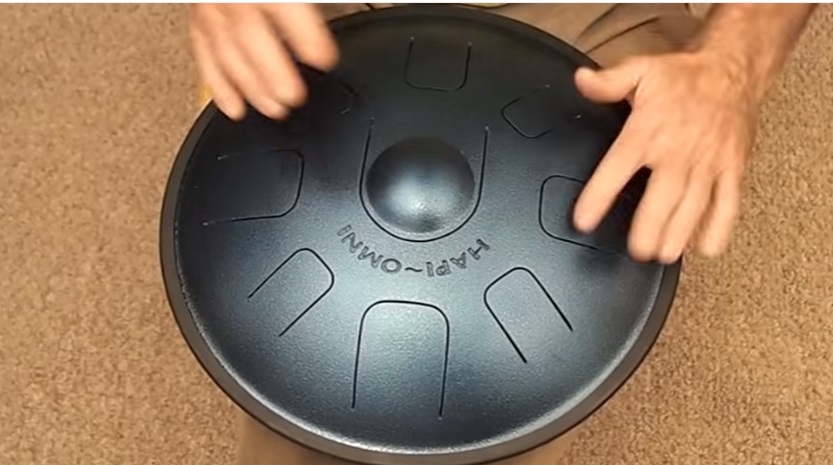
Are you a complete beginner seeking to learn a steel tongue drum? Well, the tips we have listed below should get you started.
Before you do anything, it crucial to familiarize yourself with the instrument and how it’s positioned. The idea is to get comfortable holding and playing.
Consider the advice given in the section above for positioning. And then, here are other tips you will find very useful.
– Start from the lowest note and progress to the highest while going through the entire scale. You can also reverse and play from the highest.
- Hit the notes in a circular motion starting from anywhere.
- One should only play specific notes based on their order. For instance, play only the notes on the left or right side. Or, play only the top/bottom notes.
- Create patterns and chords by playing a specific pattern or two notes at once.
- Find two notes that are complementary to each other. This is a chord when played together.
- Experiment with varying force. Start playing softly and then increase your force as you advance.
For advanced playing, you can use both hands and mallets at the same time. And then try other ideas like dampening or shortening the notes.
Use YouTube tutorials to learn how to play specific tunes.
How to Tune A Tongue Drum
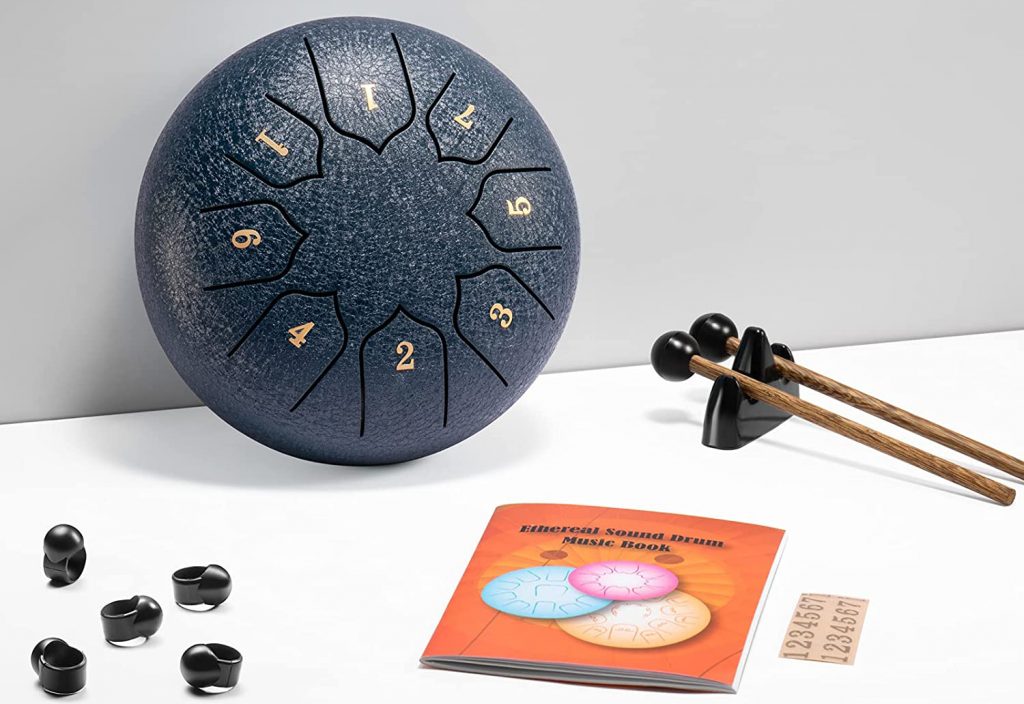
There are many ways of tuning tongue drums, depending on the brand and the specific products. However, you will notice that it all depends on the sounds you want to get and how you are using the drums.
One of our favorite tongue drums is the Idiopan Tongue. These are mostly produced and sold tunable. However, note that the aim of tuning them is to re-tune to how it should be, more than changing to a different scale.
Powerful magnets control the tuning of this product. The drum’s pitch is affected by where the magnets are positioned.
If the magnet is closer to the center, it’s further from the drum’s body, creating a lower note. A higher note is produced if the magnet is closer to the body.
The magnets are very important in the tuning of the tongue drums. Hence, you should be very careful when choosing.
Also, take good care of the magnet because any slight chip, crack, or break will cause the magnets to stop working. You will not tune your tongue drums well.
What is the Most Tones In a Tongue Drum?

Another very important factor to consider when choosing tongue drums is the number of tones. These are the number of tongues cut on the surface of the drums.
Tongue drums have gained such wide popularity over the years because of their calming, peaceful notes. These percussion instruments can have as many are 15 tones.
These steel tongue drums can be as small as 5-inches in diameter, with the least tones, or as big as 20-inches, with many tones. That is to say, the number of tones depends on the size of the drum.
Which Has A Better Sound, Red Bolivian Wood Vs. African Padauk For Wooden Tongue Drum?
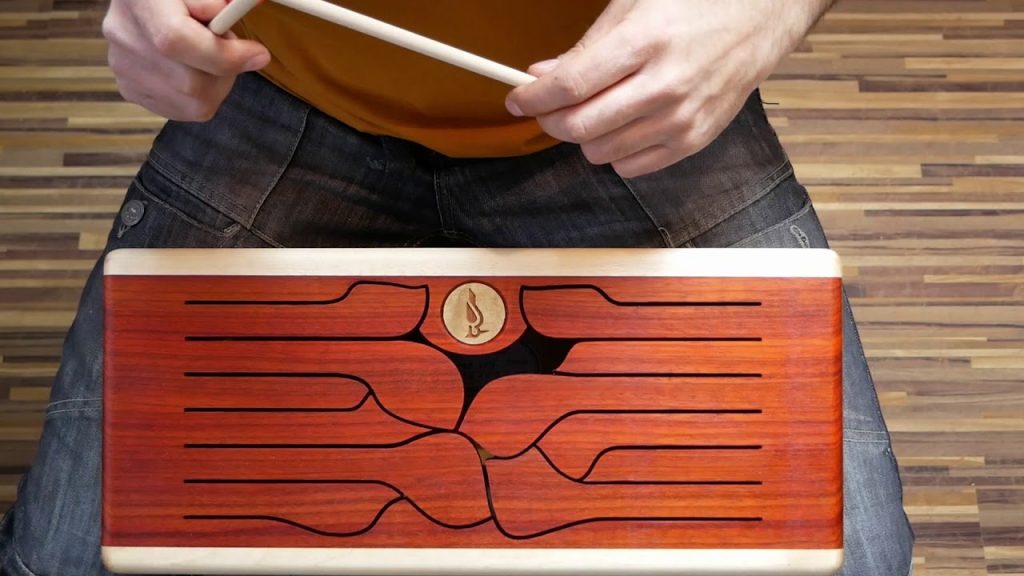
Wood selection is very crucial to the sound of wood tongue drums. As stated above, many types of woods can be used, which all have advantages and disadvantages.
We have seen many drums ranging from 8- to 12-inches crafted from different words. African Padauk and Red Bolivian woods are the most common options.
These are not hardwoods, which means they offer durable and robust performance. They can be blended with other woods, Walnut and Maple.
Concerning the tonal values, there is not much difference between the two. Each wood offers a clear tone when tuned correctly.
Red Bolivian wood is one of the most beautiful woods on the market. They build instruments with balanced tones and incredible tuning ranges. It performs more like mahogany wood, which is top on many manufacturing approaches.
African Padauk is equally strong, offering an excellent stretch for various tonal reaches.
But if you were to choose between the two, we would rather you go for the African Padauk. It’s the most popular wood known for making incredible sounds.
The soothing tones it produces are unlike anything you may have ever heard. Besides, it’s one of the most expensive woods around, because of its richness.
How To Choose A Tongue Drum?
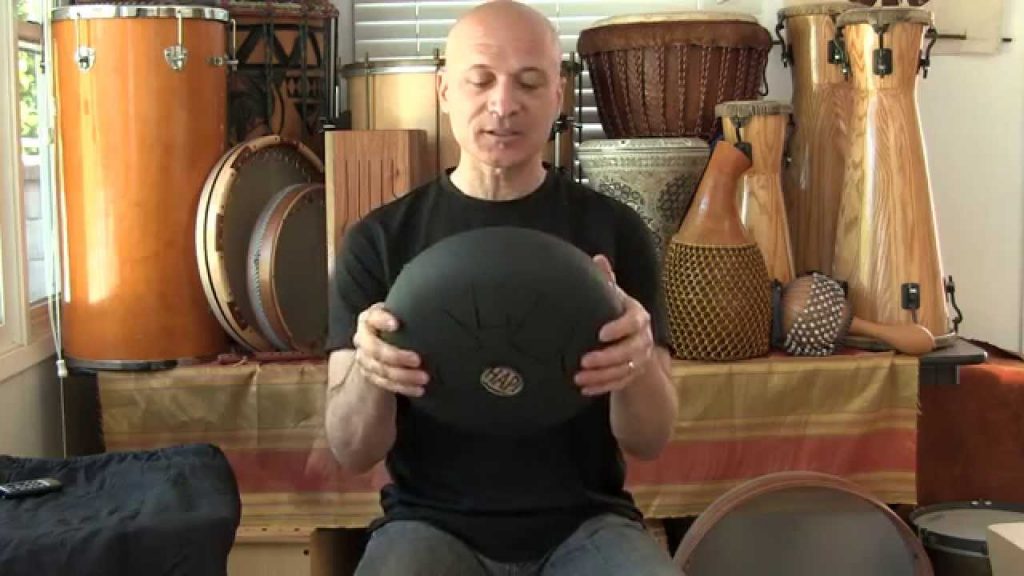
There are several things to consider when choosing a steel tongue drum. First, you need to understand that these percussion instruments are made for a different purpose, other than just playing in sets.
For beginners, you won’t think about the scale more than anything else. The scale determines the “feel” and the “emotion” aspect of the drums.
Tongue drums are available pentatonic, diatonic, chromatic, C major, E minor, and Akebono scale. These are the most popular ones, but there are many others.
It’s important to do some research before picking a scale. Here are some rules to keep in mind:
- If you are looking for happier and uplifting tones, go for major scales. For instance, C major is seen as one of the most cheerful scales around.
- Minor scales are darker, sad, and pensive. One such scale is C sharp, which is extremely cynical.
- Akebono scale is from Japan and may not very common to many people. It’s considered to have a more meditative or Zen tune. You will therefore find it very useful when trying to meditate.
You want to associate your tongue with a specific mood or emotion because that is what they are meant for. The guide we have given above should be helpful during your research.
Ideally, you want something that resonates with you as Dennis Havlena intended it to. But if you are stuck between scales and are not sure what to go for, choose a tunable tongue. Some of these drums can play up to six scales.
Consider the pitch and aesthetic of the drum too. Standard tunings are between 432Hz and 44Hz. In terms of aesthetics, choose something that appeals to your eyes.
Where Can I Purchase Kaizen Steel Tongue Drum?
Tongue drums have become very common today. Hence, it’s much easier to find anything you want anywhere.
The Kaizen Steel tongue drum features on the list of top tongue drums in the world. You can find it in several online stores around.
Also, you can try reaching out to the manufacturer and asking them for your local supplier. That way, you can but it more confidently in person.
Online shops are convenient, but you may not have a chance to play the drum before purchasing.




